Chess Notes
Edward Winter
When contacting us by e-mail, correspondents are asked to include their name and full postal address and, when providing information, to quote exact book and magazine sources. The word ‘chess’ needs to appear in the subject-line or in the message itself.
| First column | << previous | Archives [182] | next >> | Current column |
11463. ‘Supposed to have been composed ...’
Wanted: information about this composition, ascribed to Napoleon on page 11 of the St Louis Daily Globe-Democrat, 29 October 1887:
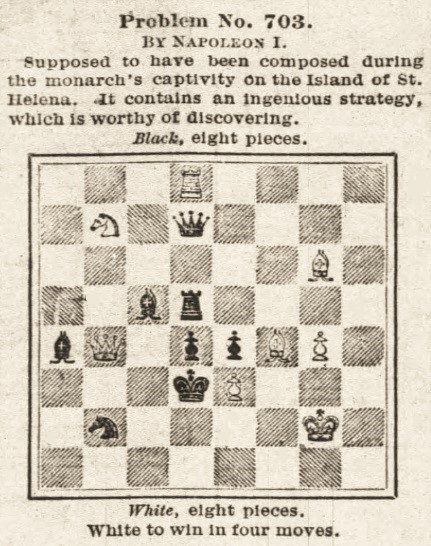
The (simple) solution was published on page 11 of the 19 November 1887 edition.
11464. Ming Ming (C.N. 11451)
From page 128 of the Reuters book mentioned in C.N. 11451, Frontlines: Snapshots of History (Harlow, 2001):

On page 130 Anthony Grey reported that his pet Ming Ming was ‘hanged on a rope from the balcony’ and that ‘then they stabbed the cat’s lifeless body with a pair of scissors and daubed her blood on the bed-sheets in my newly improvised “prison-cell” ...’
With the permission of the Anthony Grey Archive at the University of East Anglia, the original of his photograph is reproduced below:
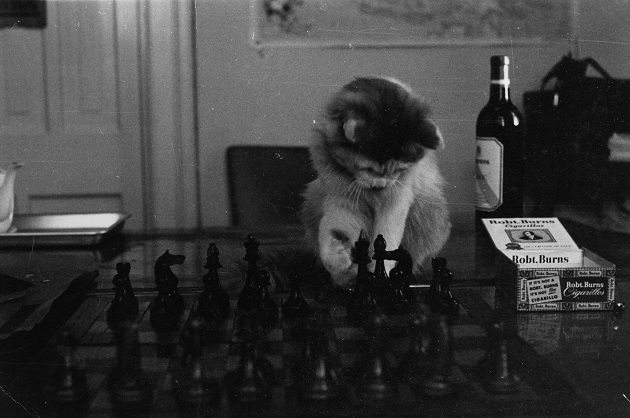
11465. Difficult to identify
This picture has been submitted by Eduardo Bauzá Mercére (New York, NY, USA), and the player will be discussed in the next C.N. item:
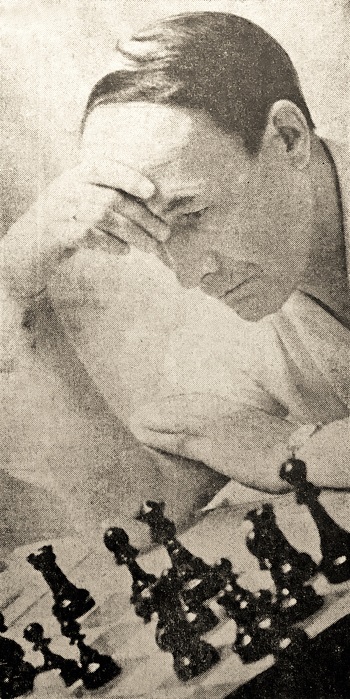
11466. Opening theory
The player shown in the previous C.N. item is – as noted by Michael Alderson (Derby, England) – Anatoly Ufimtsev. The photograph was published on page 9 of Shakhmaty na Spartakiade, 11 August 1967.
Ufimtsev was mentioned in C.N. 8385, and below is an early instance of his name being associated with (i.e. coming immediately after) that of Pirc:
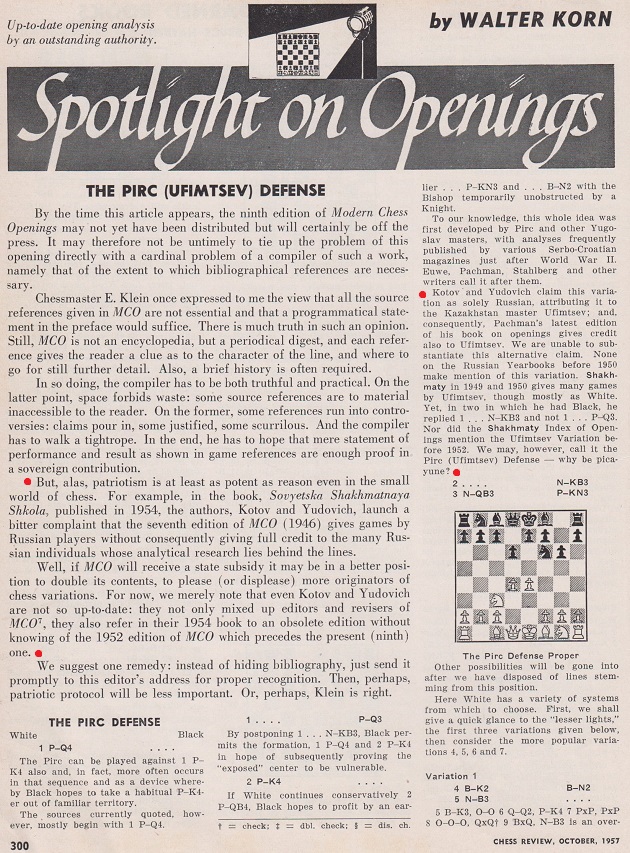
The relevant passage, on pages 70-71, of the 1954 Kotov/Yudovich book mentioned by Korn:

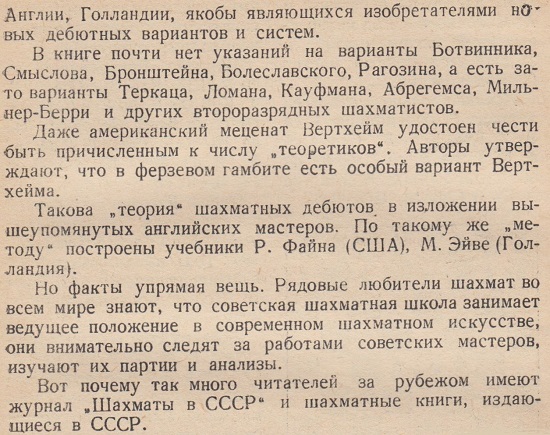
We add the broadly similar English version, from pages 81-82 of The Soviet School of Chess (Moscow, 1958 and New York, 1961):
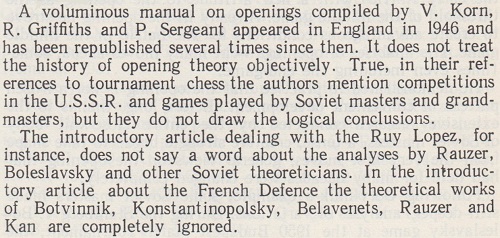
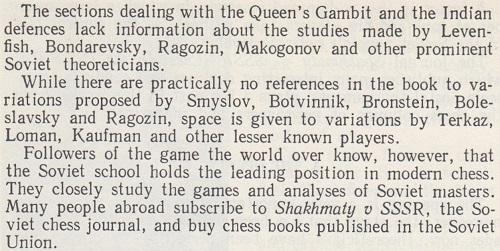
11467. Opening nomenclature
A comment by Wolfgang Heidenfeld in a review of Lehrbuch der Schachtheorie by A. Suetin (East Berlin, 1973) on pages 511-512 of the December 1973 BCM:
‘The famous USSR grandmaster recognizes that nobody can possibly know everything today and has drawn on the collaboration of masters Abramov, Friedstein and Schazkes ...
In general one cannot help gaining the impression that the authors rely far too much on material from the Soviet orbit, neglecting anything played or published elsewhere. At a rough estimate 90% or so of the game references are from the output of “Eastern” players. If this were merely the result of easy accessibility, it might pass muster, but one feels that it is rather a matter of deliberate policy. This is revealed by the system of opening nomenclature.’
Among the examples given by Heidenfeld:
- 1 P-K4 P-K3 2 P-Q4 P-Q4 3 N-Q2 N-QB3; ‘not a word of Guimard’;
- ‘I rubbed my eyes when I saw the line 1 P-Q4 N-KB3 2 N-KB3 P-K3 3 B-N5 referred to as the Petrosian Variation’ (instead of the Torre Attack);
- ‘1 P-Q4 P-Q4 2 N-QB3 N-KB3 3 B-N5 is to be called the Belo-Russian Opening because “this whole method of play was worked out by the Belo-Russian masters Silitch and Veres[s]ov”. The truth is that “this whole method of play” was worked out by the late German master Kurt Richter ...’
His concluding paragraph:
‘I think it is time for somebody to speak out against the deliberate and systematic falsification of chess history by some Soviet writers. We cannot do anything about what they are doing within their own orbit, but we can certainly try to stop our own young players – without a thorough knowledge of historical contexts and developments – from imbibing such falsehoods. Those who know better can smile at the displays of Soviet chauvinism, but there are tens of thousands who do not know. Their case must not go by default.’
Unusually, the review was followed by a note by the BCM Editor (Brian Reilly):
‘For “Falsehoods”, above, some might read “poisonous rubbish”, others “inaccuracies”. W. Heidenfeld would, we know, go for the former! ... We feel that our young players are not quite as vulnerable as Mr Heidenfeld supposes and that they already know that Popov (USSR) has invented everything, that Smith (Anglo-Sax) is pretty near behind, that Dumont (France) was a wiz[z]ard yet to be surpassed and that every country teaches and relates history in its own very nationalistic way ... One day Great Britain may be strong enough to play the Rest of the World; let us wait and see what “falsehoods” we shall be able to print ...’ [Ellipses in the original.]
11468. A letter from Ernst Falkbeer
Michael Lorenz (Vienna) has found in the Wienbibliothek (shelfmark I.N. 53934) a letter dated 28 June 1875 from Falkbeer to the writer Friedrich Schlögl. It states that owing to the latter’s absence on travel, Falkbeer had been unsuccessful in contacting him.

Our correspondent has provided this transcript:
‘Sr Wohlgeboren
Herrn Friedr. Schlögl
p[leno] t[itulo]
hier.Wien, 28. Juni 75
Verehrter Herr und Freund!
Ich war heute bei Ihnen, um Sie
einer Privatangelegenheit wegen,
die für mich von einiger Wichtigkeit
ist und auch einigermassen pressiert,
zu sprechen. Zu meinem Leidwesen
hörte ich, daß Sie verreist sind. Dürfte
ich Sie wohl bitten, mich nächsten Don-
nerstag (vorausgesetzt, daß Sie nicht
auch an diesem Tage Ihr otium
cum dignitate anderwärts ver-
bringen werden) beiläufig um
4 Uhr nachmittags zu Hause zu
erwarten? Am liebsten wäre
es mir freilich, wenn Sie die Güte
hätten, mir – falls Ihnen ein an-
derer Tag besser conveniert – ein
paar Zeilen in meine Wohnung
zu schreiben. Meine Adresse
ist: IX Mariannengasse, Nr 7,
2ter Stock. Mit collegialem GrußeIhr
E. Falkbeer – mp.’
11469. 3...g5 in the Ruy López
In a blitz game on 6 September 2019 Magnus Carlsen played 3...g5 in the Ruy López, and Olimpiu G. Urcan (Singapore) asks whether we can offer a few historical jottings on the move.
It is commonly known as Brentano’s Defence, in view of a series of articles in the Wiener Schachzeitung by Franz Brentano under the title ‘Neue Vertheidigung der spanischen Partie’: April-May 1900, pages 97-104; February 1901, pages 38-45; January 1903, pages 7-14. Those articles can be viewed online, via the link to the magazine given in C.N. 7728.
Analytical responses were published by E. Schallopp (Der Schachfreund, May 1900, pages 21-23) and by J. Berger (Deutsche Schachzeitung, June 1900, pages 165-168).
Annotating the game H.A. Foxwell v W.S. Branch (‘Played recently in the Cup Tourney of the Cheltenham Club’) on page 76 of the February 1901 BCM, C.E. Ranken wrote of 3...g5:
‘It is, however, certainly a most puzzling counter-attack in an opening where the first player has been supposed hitherto to be able to keep his opponent on the defensive for a considerable time.’
The most prominent early game beginning 1 e4 e5 2 Nf3 Nc6 3 Bb5 g5 occurred in a short match between Teichmann and Schlechter in Vienna. From page 44 of the February 1904 Deutsche Schachzeitung:
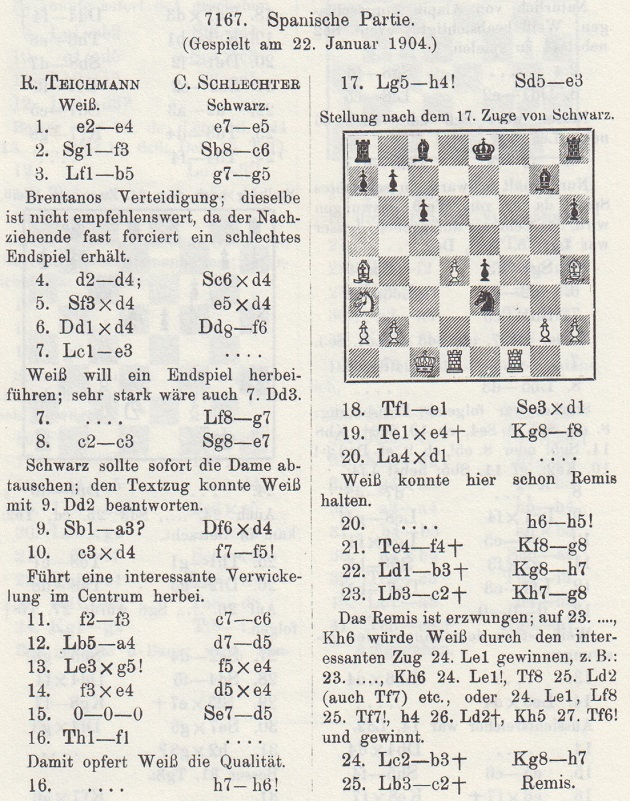
Below is a note about 3...g5 on page 429 of the Handbuch des Schachspiels (Berlin and Leipzig, 1922):

There was discussion of the opening in the BCM in 1922, April (pages 126-128) and May (pages 183-184), in an article on the Ruy López by W.J. Allnutt. His final paragraph:
‘I am not sanguine as regards present-day analysis, but I believe that P-KKt4 will eventually smash up what might be described as “a developmental gambit”.’
In a letter on pages 226-227 of the June 1922 issue, C.S. Howell (Madrid) wrote unfavourably about the opening, as did Thomas Kelly (Cheetham) on pages 227-228. Writing from Rio de Janeiro on pages 347-348 of the September 1922 BCM, W.J. Allnutt set out his disagreement with Howell’s comments.
Page 152 of CHESS, March 1949 had an article by H.G. (not ‘S.G.’) Schenk entitled ‘The Brentano Defence in the Ruy López (3...P-KKt4) put to the test’. The opening paragraph:

The two game-scores given were E.G. Sergeant v H.G. Schenk, Hastings, 30 December 1948, and D.M. Horne v H.G. Schenk, Hastings, 5 January 1949. The article ended with this remark:
‘May I, in conclusion, venture a guess? It is that we have not heard the last of Brentano’s Defence.’
In a letter on page 193 of the May 1949 CHESS W.J. Lush (Plumstead) asked for clarification about the exact purpose of 3...g5, and Schenk replied on page 217 of the July/August/September 1949 issue:
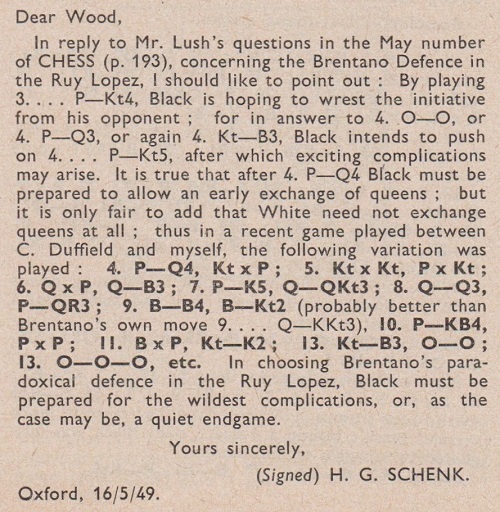
11470. Mohammed Naguib
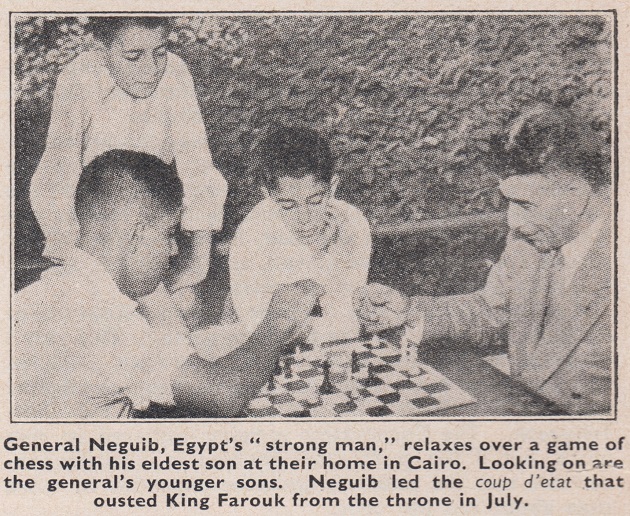
This photograph of General Mohammed Naguib of Egypt (1901-84) was published on page 85 of CHESS, February 1953.
Inevitably, it was referred to in the March 1953 issue (page 110).
11471. Neologisms
It is tempting to propose, as additions to Unusual Chess Words, such neologisms as boardista, boardite and boardomaniac – and there may be better ones – to describe those individuals who rush to point out any picture featuring a wrongly-placed chessboard yet never express concern about obvious blunders in chess writing.
11472. Dale Brandreth (1931-2019)
David DeLucia (Darien, CT, USA) informs us that Dale Brandreth died on 9 September 2019.
Dr Brandreth’s reputation as a chess writer, historian, bibliophile, publisher and book-dealer was exceptionally high, and we had countless personal occasions to appreciate his knowledge, judgement, friendliness and integrity.
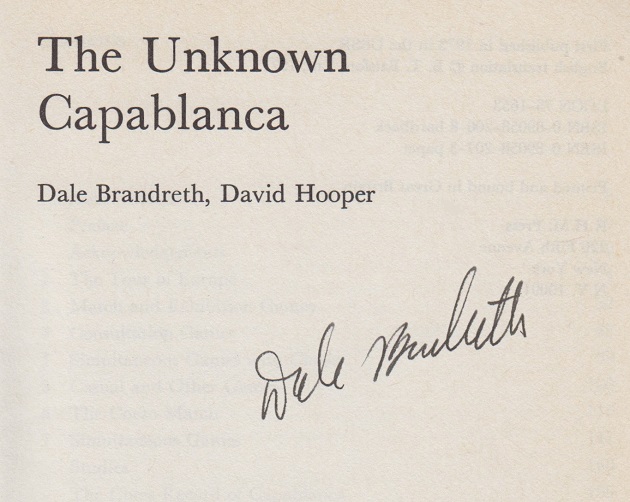
11473. Basic checking
From page 529 of the Illustrated London News, 30 May 1857:

This remark by Staunton was quoted in C.N. 91 (see page 233 of Chess Explorations). The final sentence is particularly relevant, mutatis mutandis, in the Internet era.
11474. Records
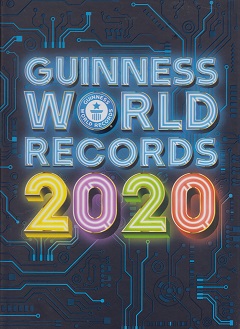
The 2020 edition of Guinness World Records, just published, has four chess entries:
- Page 31: ‘Feb. 17. In 1989, chess Masters Ivan Nikolić and Goran Arsović (both SRB) face off in Belgrade, now the capital of Serbia, for a 20-hr 15-min epic that features the most moves in a chess game: 269.’
- Page 82: ‘Chess lesson. Two chess clubs and two schools from the municipality of Muttenz in Switzerland joined up to host the largest chess lesson on 20 Sep 2018. A total of 1,459 children from the area learned the rules and some basic strategies of the ancient board game.’
- Page 176: ‘Chess piece. The World Chess Museum (USA) unveiled a 6.09-m-tall (20-ft) king piece measuring 2.79 m (9 ft 2 in) in diameter at its base in St Louis, Missouri, USA, on 6 Apr 2018. It was 53 times the size of a standard “Champion Staunton” king piece.’
- Page 178: ‘Fastest time to arrange a large chess set. Shurdamiev Nurzatanovich (KAZ) took 46.62 sec to align a scaled-up chess set at Kashirskaya Plaza in Moscow, Russia, on 28 Oct 2018. As per GWR guidelines, the smallest pieces (i.e. the pawns) were a minimum of 20 cm (7.8 in) tall.’
11475. George VI
This addition to Chess and British Royalty comes from page 52 of the New York Sun, 10 June 1939:

Acknowledgement: Eduardo Bauzá Mercére (New York, NY, USA). The text later appeared on page 64 of the American Chess Bulletin, May-June 1939.
11476. Nardshir
Avital Pilpel (Haifa, Israel) writes:
‘The Talmud mentions (in Ketuboth tractate, 61:2) the game of nardshir (נרדשיר). The context – Ketuboth means “marriage contracts” – concerns whether a man may divorce a woman who is addicted to this game. The famous eleventh-century Talmudic commentator Rashi translates nardshir as Ishkashish (אשקשיש), i.e. chess, from the medieval French eschecs. Hence both Ishkashish and nardshir (or near variants) are used in early modern Hebrew as a term for “chess”. Rashi was wrong; nardshir could not possibly be chess, the Talmud being sealed in about 500 A.D.
Looking for the first mention of chess in the modern Hebrew press, I checked the Historical Jewish Press website for “nardshir” (in Hebrew). The earliest occurrence found is in Ha’Zfira (Warsaw), 27 April 1880, page 7. The author, Zebi Hirsch Scherschewski, claimed that nardshir is chess, based on the mention in the Talmud, and he even asserted that it was named after its “inventor”, Nassir Daher.
As I note in an entry dated 14 September 2019 on my Jewish Chess History webpage, the editor added a skeptical footnote, claiming that nardshir is not chess. The reason? Not any knowledge of the history of the game, but the fact that, in the Talmud, nardshir is referred to as “an easy game that only women play”, and therefore could not be chess ...
Is anything more known about this “theory” of chess being “named after” Nassir Daher?’
11477. ‘Can Black win?’
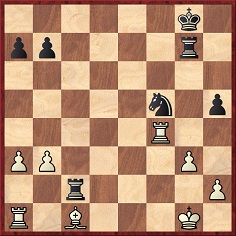
Black to move
This position was discussed briefly by Staunton when he published a consultation game against Löwenthal in the Illustrated London News column referred to in C.N. 11473 (30 May 1857, page 529):

1 e4 e5 2 Nf3 Nc6 3 c3 d5 4 Qa4 Qd6 5 exd5 Qxd5 6 Bc4 Qd6 7 O-O Bd7 8 Qb3 Nh6 9 Na3 Qf6 10 Bd5 Na5 11 Qc2 Bxa3 12 bxa3 Qd6 13 Re1 f6 14 Bb3 Bc6 15 Nd4 Nxb3 16 Qxb3 Bd5 17 Nb5 Bxb3 18 Nxd6+ cxd6 19 axb3 Nf5 20 d4 Rc8 21 dxe5 dxe5 22 f4 O-O 23 fxe5 Rxc3 24 exf6 Rc2 25 fxg7 Rf7 26 Re4 Rxg7 27 g3 h5 28 Rf4.
11478. Grandmaster
Regarding early appearances of the term grandmaster, John Townsend (Wokingham, England) notes ‘ce grand maître’ with reference to Philidor on page 5 of the Philadelphia, 1821 edition of Analyse du jeu des échecs:
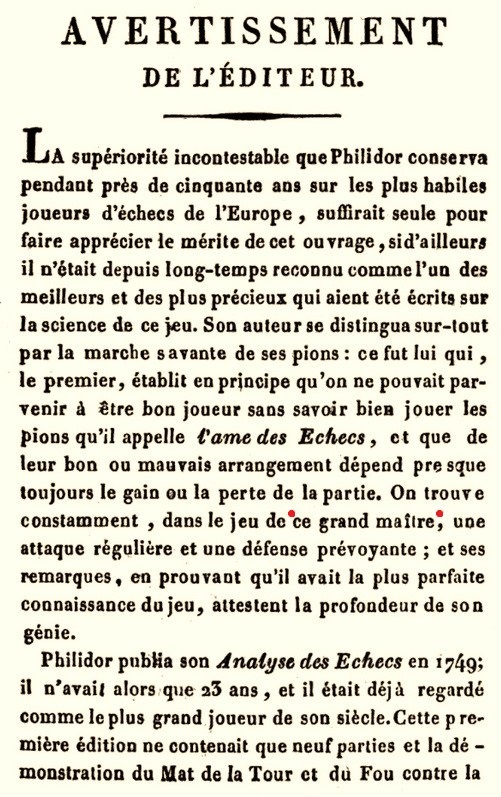
Commenting that ‘grand maître’ is a less distinctive term than ‘grandmaster’, since the French adjective may be translated as either ‘grand’ or ‘great’, our correspondent adds that volume 1 of Le Palamède (Paris, 1836) had the following on pages 318-319:
‘Philidor a nommé les pions l’âme des échecs, et il était particulièrement remarquable par sa manière savante de les conduire. L’école fondée en France par ce grand maître a hérité de sa science.’
11479. Pulped
Wanted: information about any chess books which have been pulped.
11480. Interviews in Izvestia (C.N. 8045)
C.N. 8045 referred to an article ‘Close to the Grandmasters’ on pages 142-143 of the April 1968 Chess Life which comprised a translation of interviews by Yuri Zarubin with Tal, Gheorghiu, Euwe, Pachman and Najdorf. Two extracts:
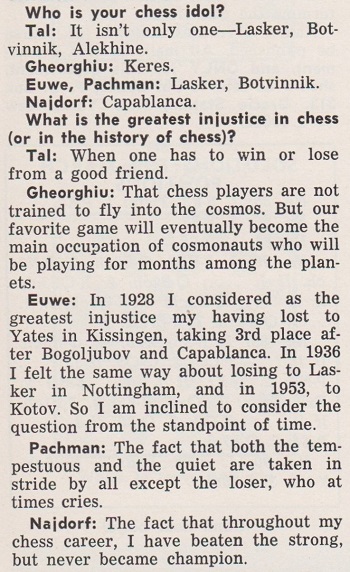
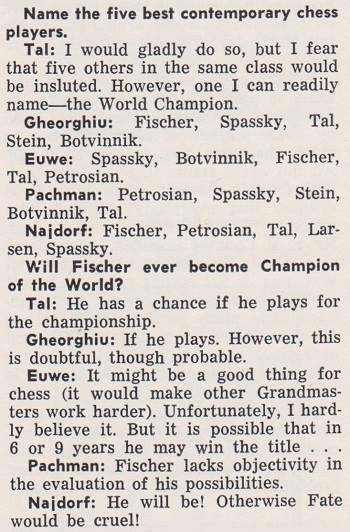
Michael Kühl (Berlin) provides the original article, from page 5 of Izvestia, 29 November 1967:
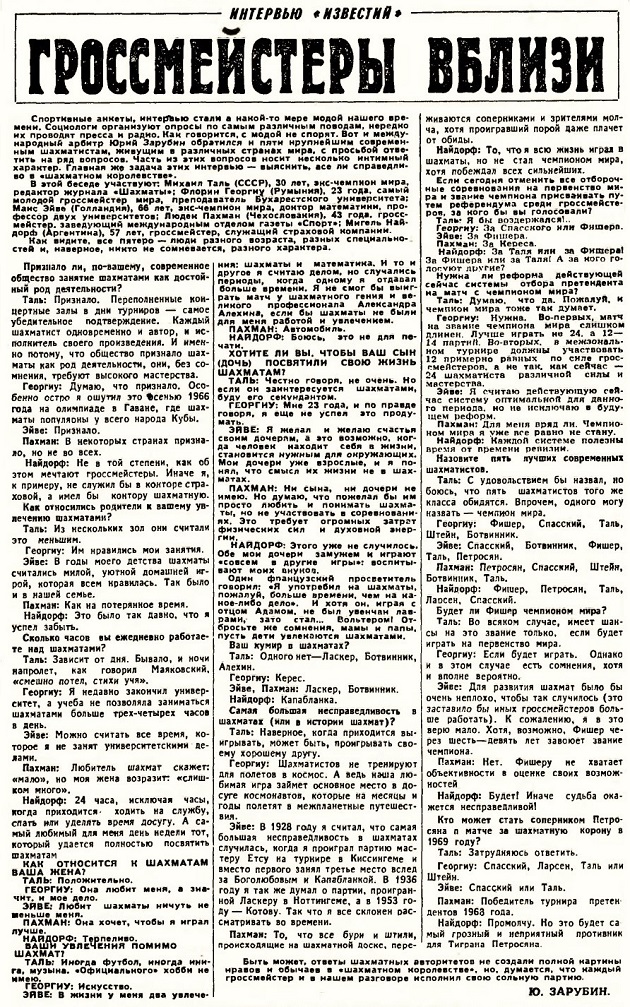
11481. A Thomas Cook tour
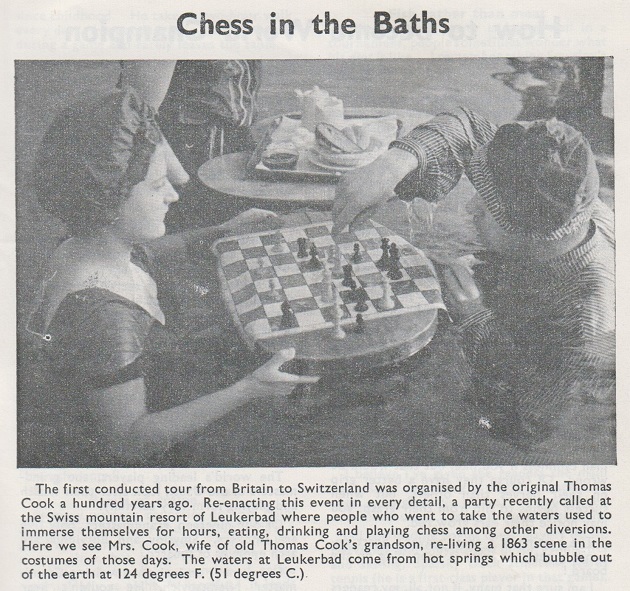
This feature about chess in Leukerbad appeared in CHESS, though giving a precise source is not straightforward. The page was erroneously numbered 399 instead of 11. All of the issue’s pages were headed 30 September 1963, but the magazine cover stated October 1963, while the masthead on page 1 gave 7 October 1963 as the date of issue.
11482. 3...g5 in the Ruy López (C.N. 11469)
A Vienna University webpage on Franz Brentano is pointed out by Michael Lorenz (Vienna).
11483. Adolf Zinkl’s grave (C.N. 6685)
Michael Lorenz also reports that in August 2019 he tidied the gravestone of Adolf Zinkl in the Zentralfriedhof Wien and took this photograph:
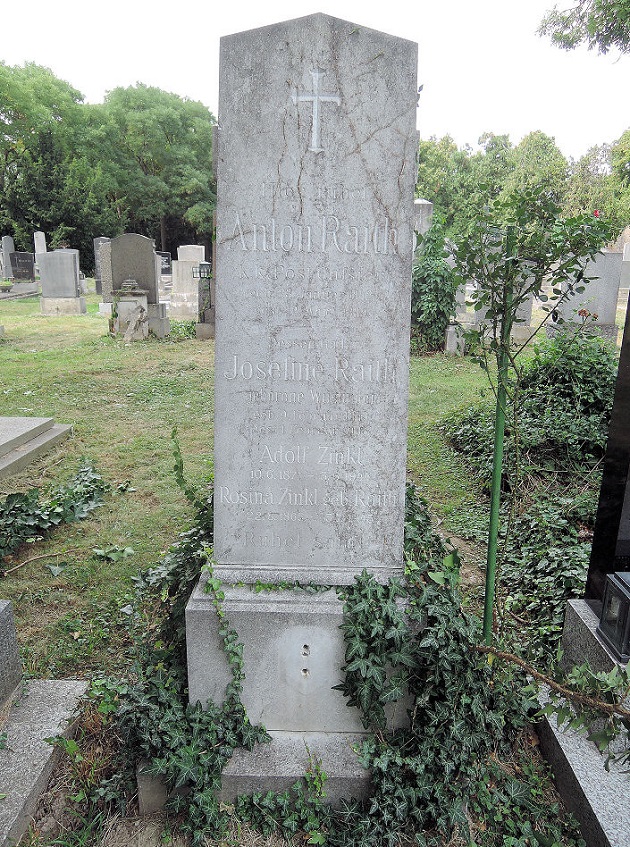
Our correspondent furthermore provides the fourth paragraph of the will of Zinkl’s widow, Rosina (1865-1945), written on 29 August 1944:
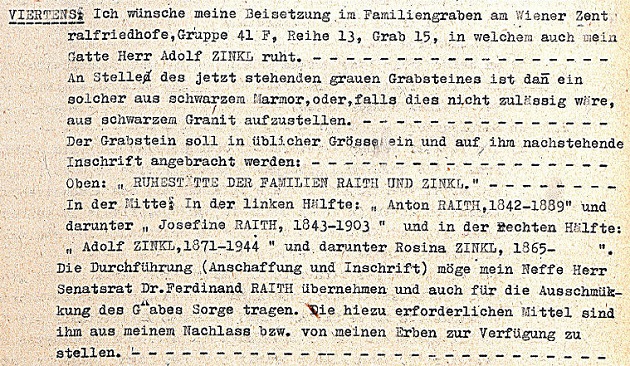
The request that the headstone be replaced with one made of black marble or black granite, to be bought by her nephew Senatsrat Dr Ferdinand Raith from his share of the inheritance, was not complied with, for unknown reasons.
11484. Interviews in Izvestia (C.N.s 8045 & 11480)
Gerd Entrup (Herne, Germany) notes that Euwe’s (famous) loss to Kotov was not in 1953, as reported in the interview, but in 1946, in the Groningen tournament.
11485. Annotating and crediting
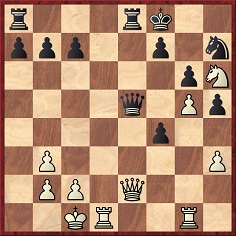
White to move
Leaving his queen en prise, White threatened mate with 26 Rd7. The possible rejoinder 26...Nxg5 has received much attention, but the present item focuses on the issue of due attribution of analysis rather than the analysis itself.
The position arose in Morphy’s well-known victory over T. Lichtenhein in the 1857 New York tournament. Working backwards, we begin with page 48 of the 1994 book Magic Morphy by C. Abravanel and P. Clère, which attributed the critical line, beginning 26...Nxg5 27 Rxg5 Qf6, to P.W. Sergeant:

Another example comes from pages 8-9 of the 1922 edition of Half-Hours with Morphy by E.E. Cunnington:
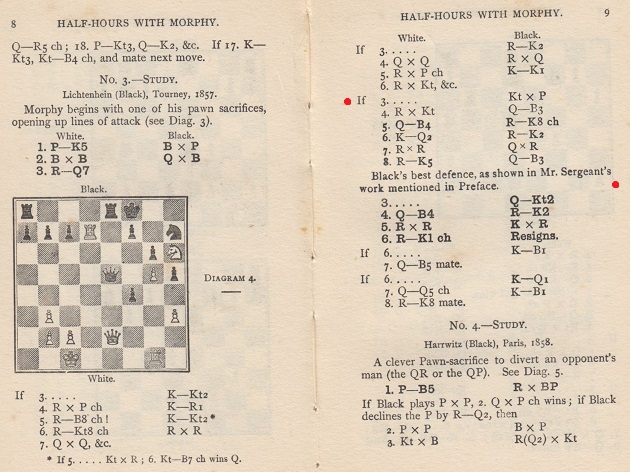
From page 47 of Sergeant’s 1916 monograph on Morphy:

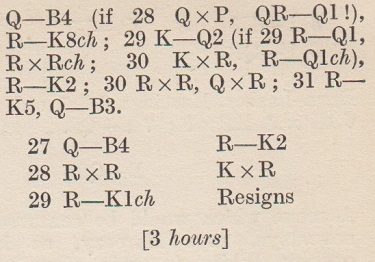
However, when that line was given by Reinfeld on page 13 of the January 1955 Chess Review it was credited to Maróczy:
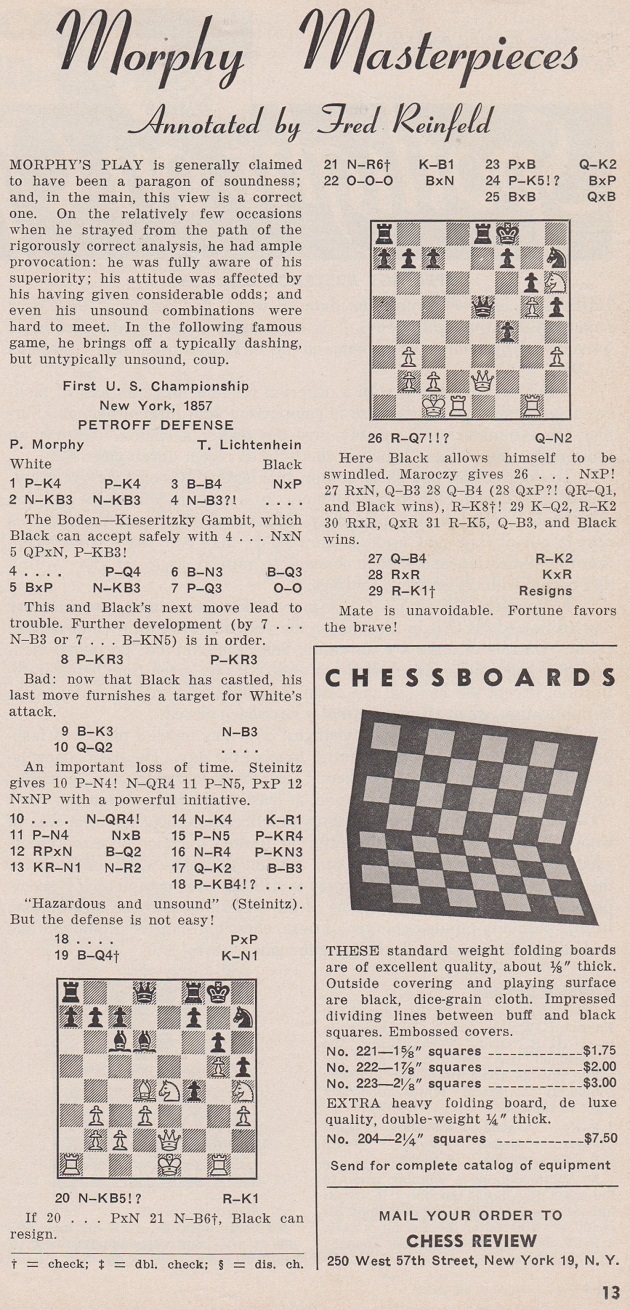
See also pages 59-60 of the 1974 Reinfeld/Soltis book Morphy Chess Masterpieces, which stated that 26 Rd7 (‘!’) ‘loses against inspired defense’ but that Lichtenhein missed ‘the beautiful defense pointed out by Maróczy, the great Hungarian player and analyst’.
Below is Maróczy’s note in his 1909/1925 book on Morphy (pages 35-36 and 23 respectively):

From page 49 of the third edition (1894) of Paul Morphy. Sein Leben und Schaffen by Max Lange:
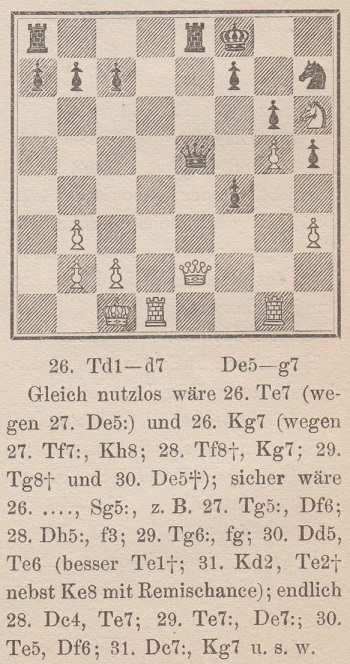
The game was discussed on pages 132 and 135 of Steinitz’s 1889 book The Modern Chess Instructor, with these notes regarding 26 Rd7 and 26...Qg7:

The reference to Löwenthal concerns pages 335-336 of his 1860 monograph on Morphy:

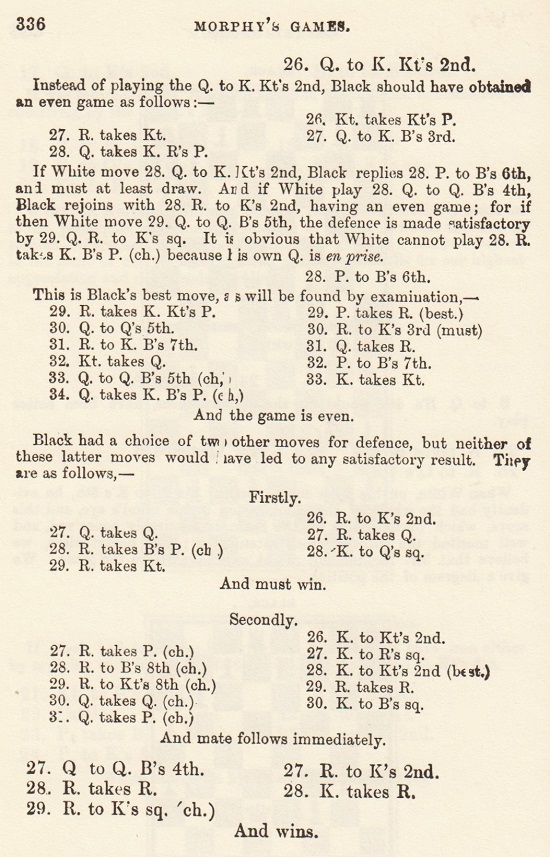
Two earlier publications of the game:
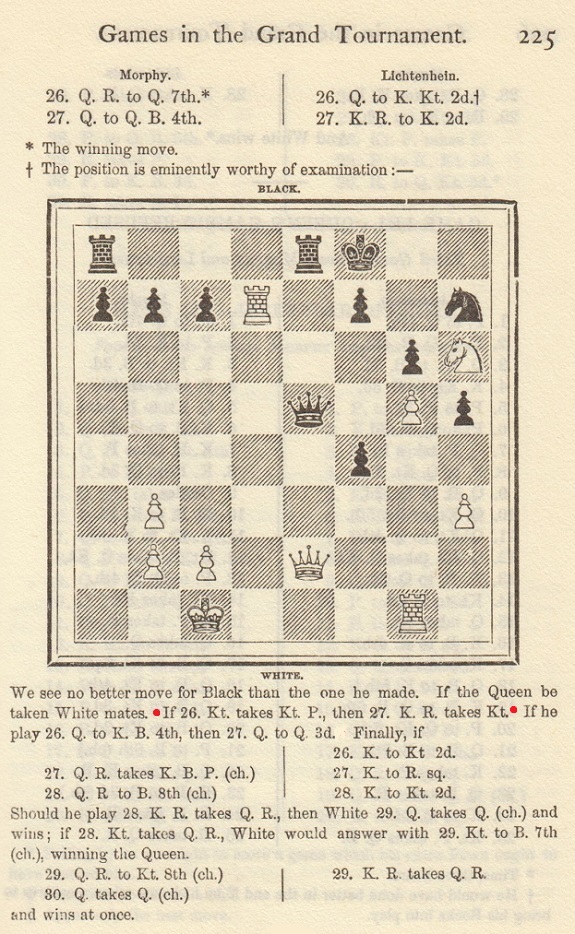
New York, 1857 tournament book (1859), page 225
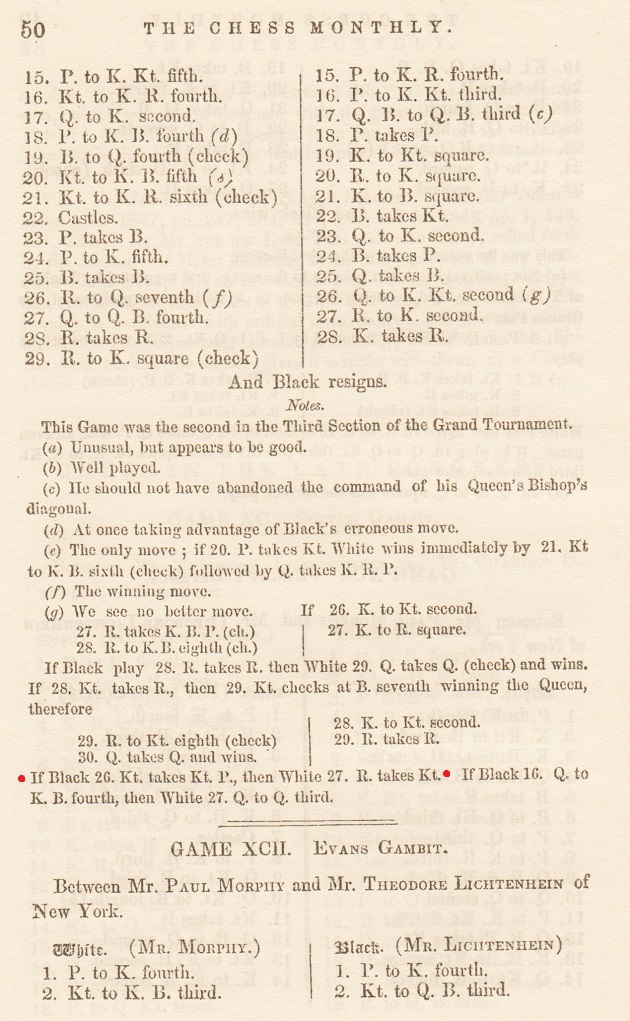
Chess Monthly, February 1858, page 50
See too page 45 of the 1995 work Tízezer Lépés Morphyval by C. Gerencsér. The latest detailed analysis of the game appears to be in Morphy move by move by Z. Franco (2016). The note after 26...Qg7 (‘?’) on page 89 is 16 lines long but mentions no prior annotators. That hardly seems right, but the game illustrates the difficulty of deciding how moves, lines and ideas can best be credited to analytical predecessors. The matter was addressed by Sergeant in the Preface to his Morphy games collection (page v):
‘In the annotation of the games I have made full use of all the recognized authorities in my possession or within my reach, including the books of Löwenthal, Lange and Maróczy, and the scattered criticisms of Zukertort, Steinitz, Lasker, etc. Where I have been able to trace the original source of an important note, I have usually acknowledged it; but the habit of so many analysts of borrowing without acknowledgement makes it impossible to do this in many cases.’
11486. Fines
Which is the most recent chess event in which a player was, or could have been, fined for non-compliance with the rules?
In the nineteenth century such provisions were commonplace, and below are extracts from the conditions for a proposed match between Harrwitz and Löwenthal, on page 249 of the British Chess Review, 1853:
‘6. ... If either party be absent within half-an-hour of the time appointed for play, he shall be fined £1 for every such offence, the fine to be paid before or at the next meeting for play, under penalty of the forfeiture of the match; and if he be absent more than one hour beyond the appointed time, one game shall be added to the adversary’s score.’
‘10. Each party shall be allowed 20 minutes for deliberation on any move. In the event of either party taking more than 20 minutes, he shall be fined the sum of ten shillings for each additional ten minutes (the fine to be paid as in Condition 6). But neither party shall be allowed more than one hour over a move, and the party who does not play a move at the expiration of one hour shall forfeit the game to his opponent.’
11487. Die Bühne
Zdeněk Závodný (Brno, Czech Republic) sends pages 17-18 of the 156/1925 edition of Die Bühne:

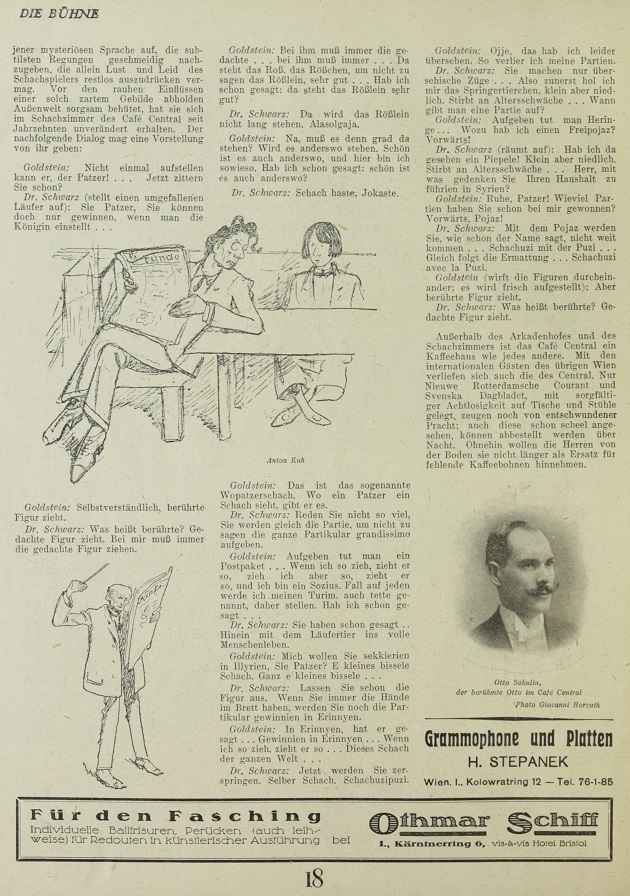
11488. The Grünfeld Defence
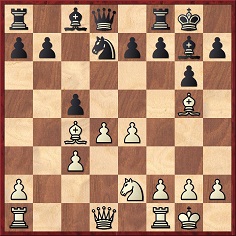
Position after 10 Bc1-g5
This position occurred in Bronstein v Botvinnik, second match-game, Moscow, 1951, and below are the defending world champion’s annotations on pages 268-269 of volume two of his work Shakhmatnoe tvorchestvo Botvinnika (Moscow, 1966):
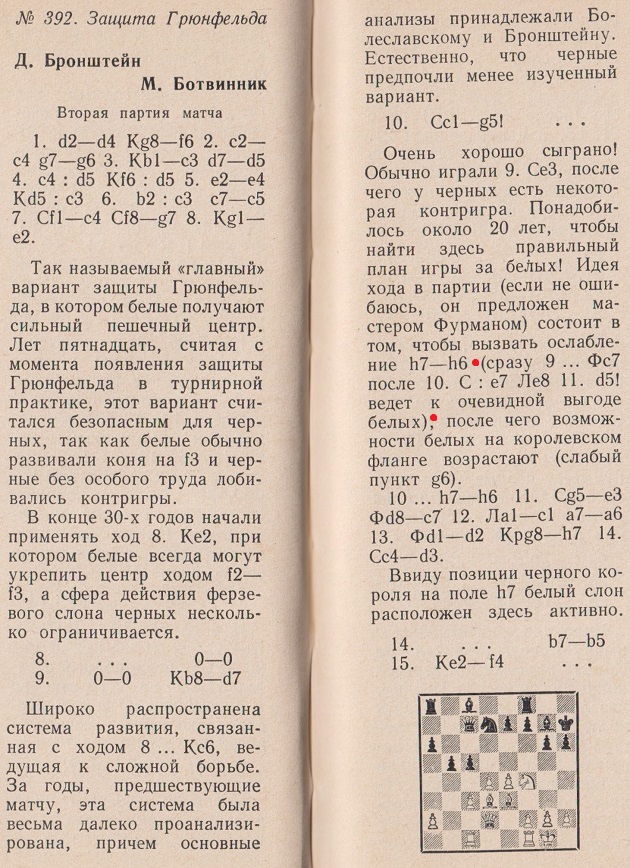
Botvinnik mentioned (with the moves misnumbered) that 10...Qc7 at once would evidently be to White’s advantage after 11 Bxe7 Re8 12 d5.
We note Botvinnik’s remarks as a preamble to placing on record a correspondence game (J.E. Littlewood v C.L. Tadiello) with that line which was published on page 263 of the mid-April 1964 issue of CHESS:
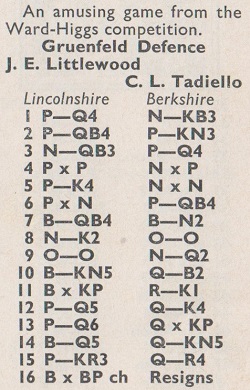
1 d4 Nf6 2 c4 g6 3 Nc3 d5 4 cxd5 Nxd5 5 e4 Nxc3 6 bxc3 c5 7 Bc4 Bg7 8 Ne2 O-O 9 O-O Nd7 10 Bg5 Qc7 11 Bxe7 Re8 12 d5 Qe5 13 d6 Qxe4 14 Bd5 Qg4 15 h3 Qh5
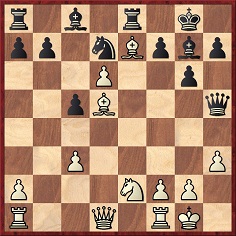
16 Bxf7+ Resigns.
11489. Capablanca cartoon
Yuri Kireev and Mikhail Sokolov (Moscow) send this cartoon from the Moscow tournament bulletin, 64, 29 May 1936, page 4:

11490. Venice, 1949
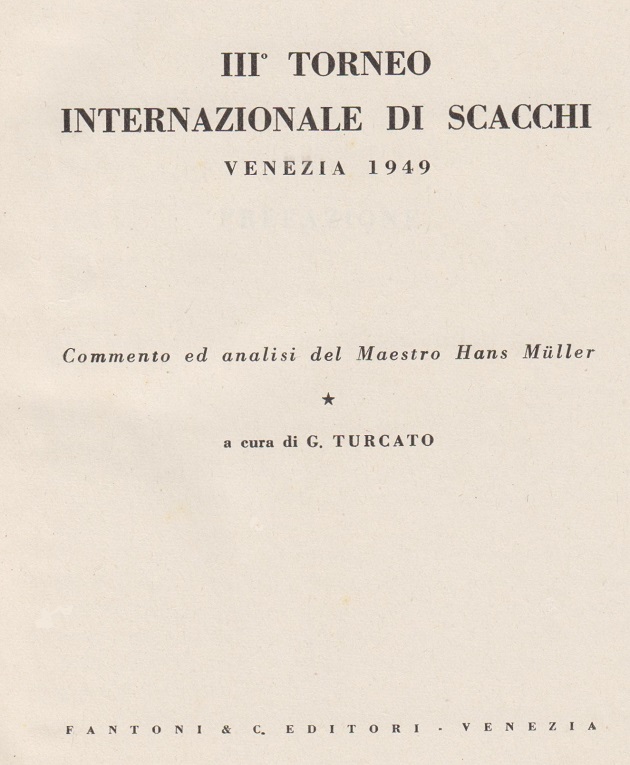
All the photographs in the book:
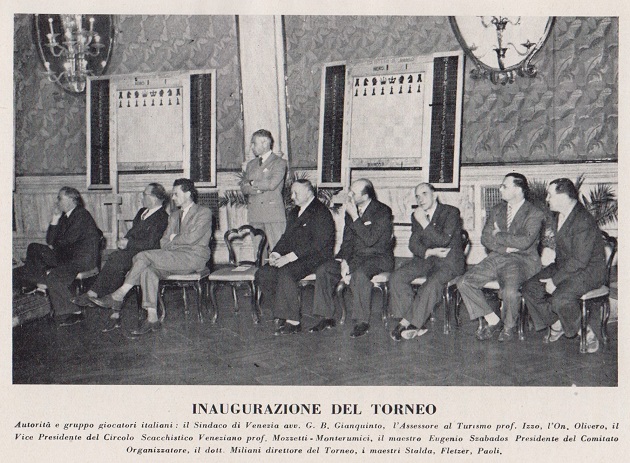

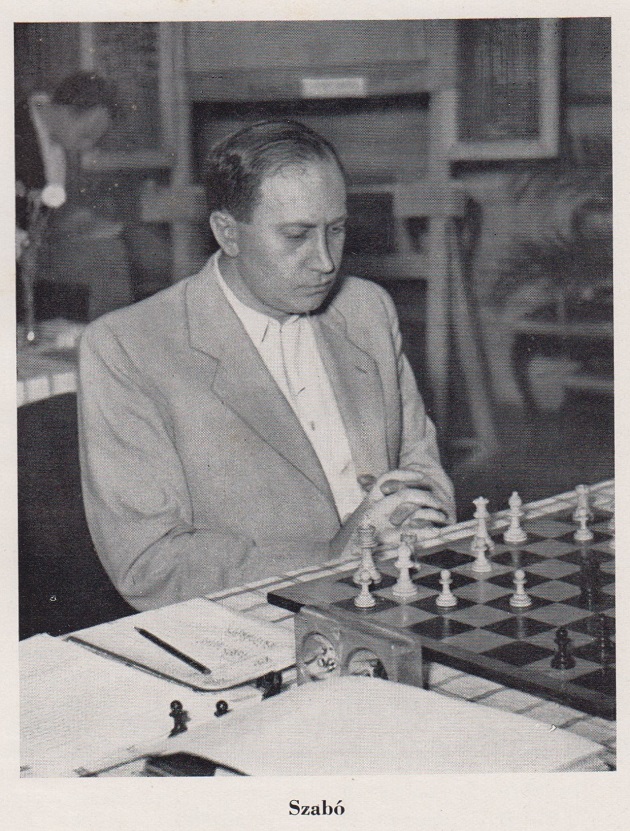
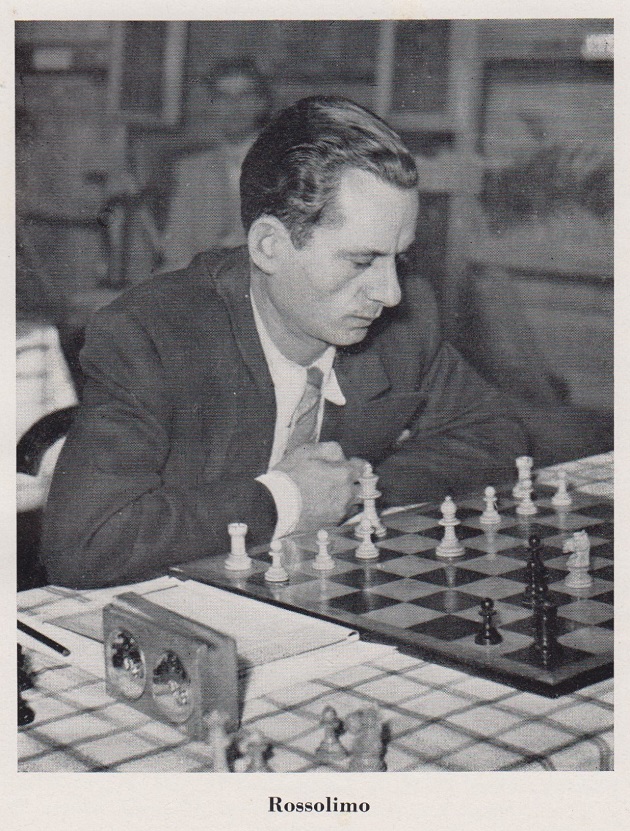
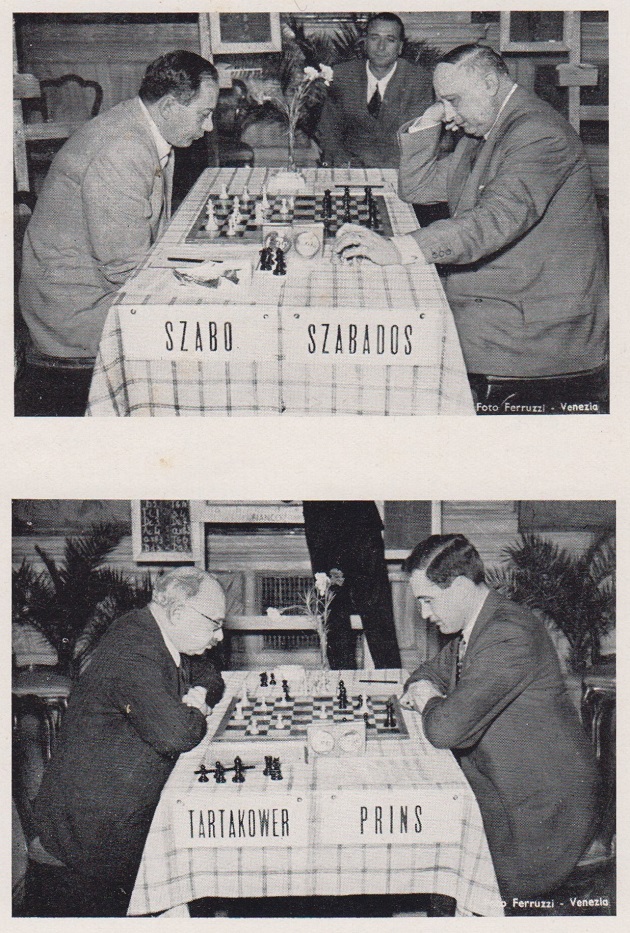

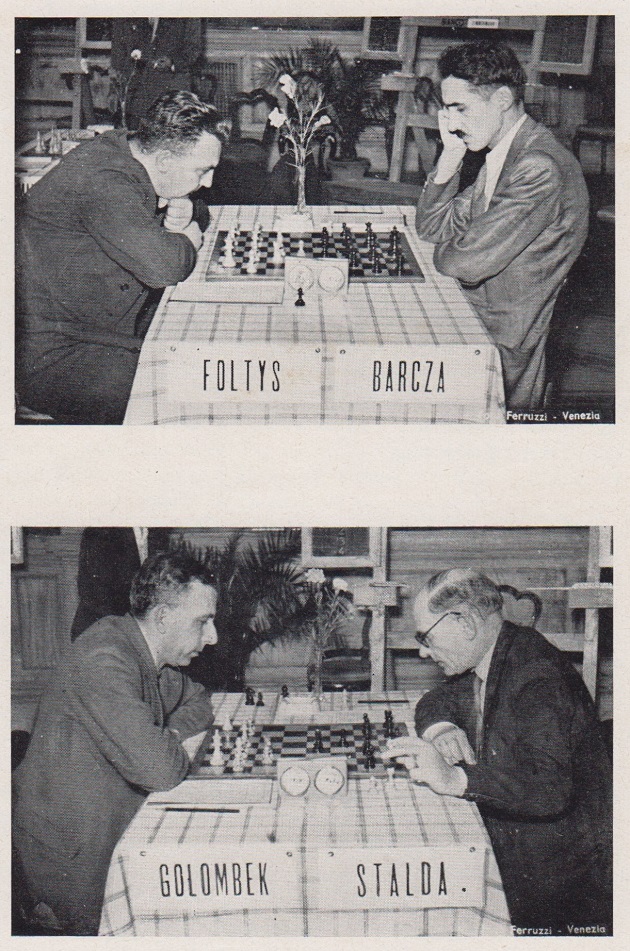
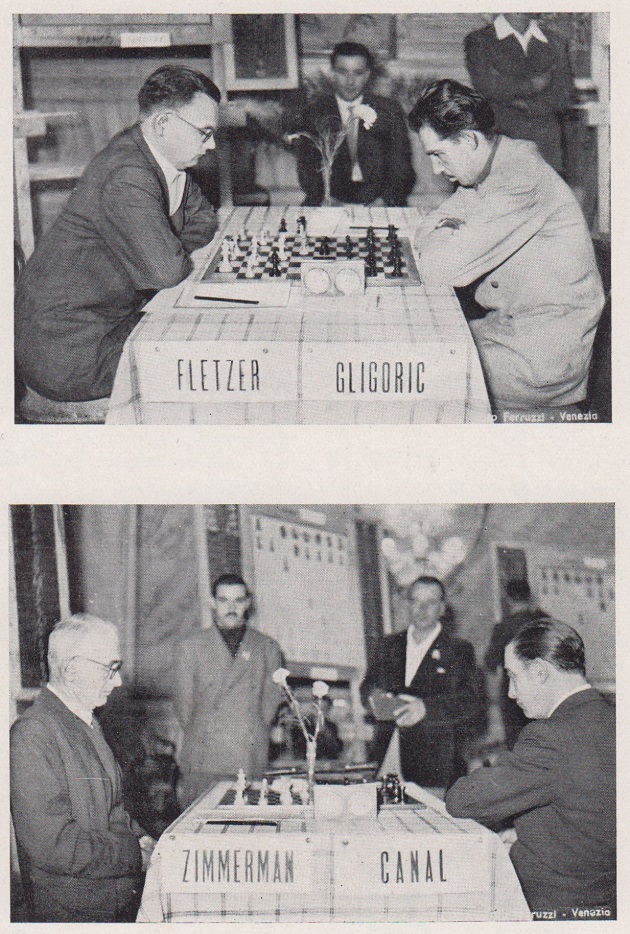
| First column | << previous | Archives [182] | next >> | Current column |
Copyright: Edward Winter. All rights reserved.